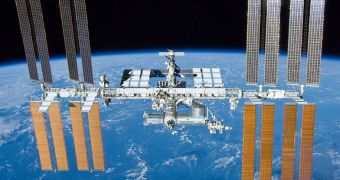This Tuesday, September 21, officials from all the space agencies involved in the International Space Station (ISS) project met via video-conference, to discuss the future of the outpost.
At this point, plans call for the facility to be opened for science, and used for at least the next decade. All actors involved in the project expressed their continuing support for the $100 billion endeavor.
Originally, the facility was supposed to remain in low-Earth orbit only until 2015, but then all space agencies understood that this would have meant bringing down the ISS only a handful of years after a decade spent building the thing.
In charge of discussing such aspects pertaining to ISS' scheduled and function is the Multilateral Coordination Board (MCB), the supreme authority in all things having to do with the spacecraft.
This group includes senior representatives from NASA, the Canadian Space Agency (CSA), the European Space Agency (ESA), the Russian Federal Space Agency (RosCosmos), and the Japanese Ministry of Education, Culture, Sports, Science and Technology (MEXT).
According to the ISS cooperation pact, the MCB meets at regular intervals, in order to ensure that all station operations and activities are coordinated among partners.
The MCB also heard some good news on Tuesday. The Japanese and Russian governments agreed to sponsor the ISS beyond 2016, and most likely until 2020.
The US Congress is now also considering legislation that would see the federal government continuing to sponsor the project until at least 2020.
“ESA and CSA are working with their respective governments to reach consensus about the continuation of the station,” NASA officials write in a press release.
“NASA also is continuing to work with the U.S. Congress to complete the necessary procedures to extend station operations consistent with the presidential budget request,” they add.
“The MCB also noted the benefits to future exploration beyond low-Earth orbit through enhanced station research, technology development and other opportunities,” the document reads.
The ISS is the most complex spacecraft ever designed, building in the footsteps of the Russian-built and operate MIR space station.
It now features an extended crew of six permanent residents, has two emergency escape Soyuz capsule attached to it at all times, and features a grand total of six docking ports.

 14 DAY TRIAL //
14 DAY TRIAL //